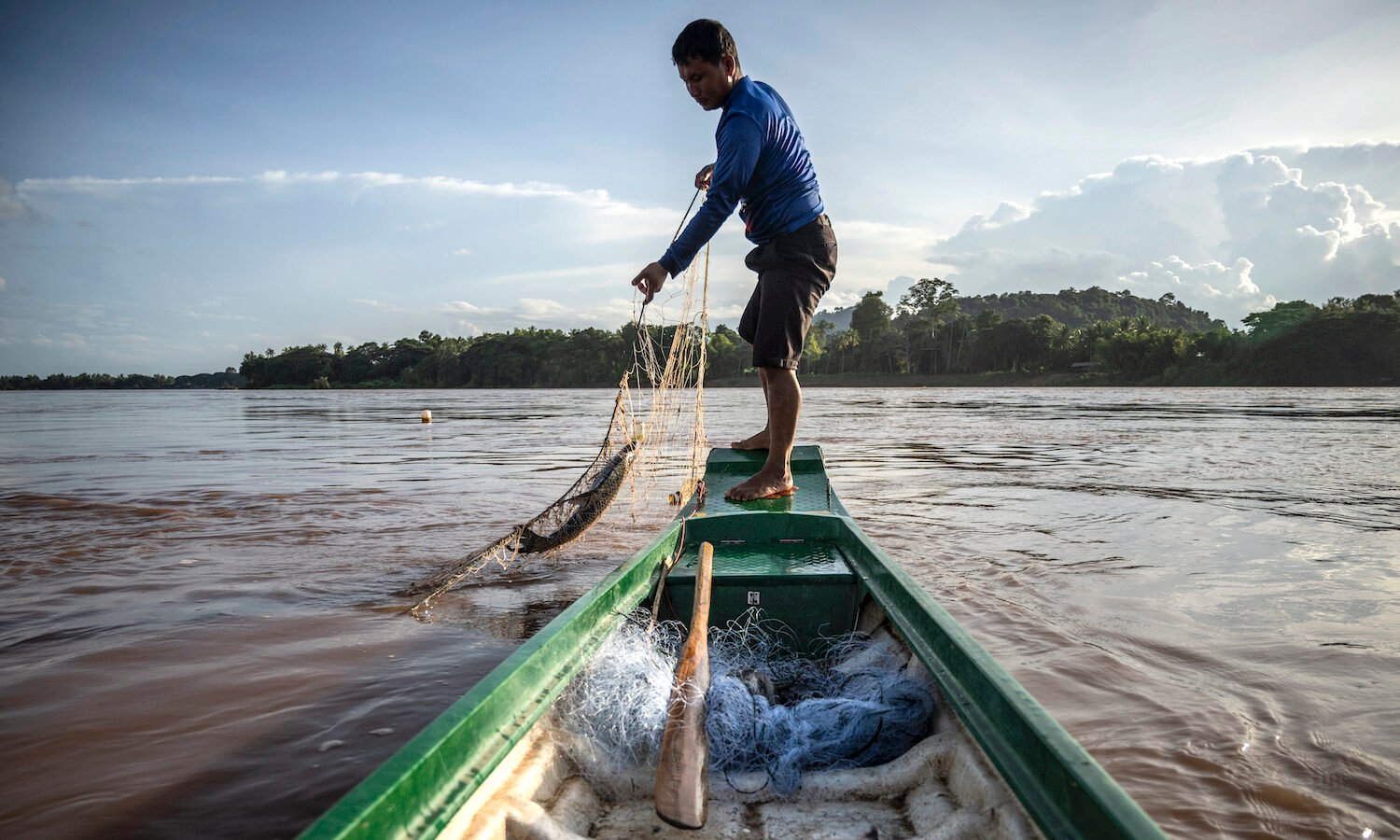The Heart of Cambodia - Mekong River

The Mekong River ranks among the most powerful rivers in Asia. It is the twelfth longest river globally and traverses six nations: China, Myanmar, Laos, Thailand, Cambodia, and Vietnam. Boasting a remarkably diverse ecosystem, the Mekong serves as a vital resource for numerous communities in these regions, offering sustenance, a means of transportation, and opportunities for tourism.
Cambodia Mekong River
In Cambodia, the Mekong River enters the nation from the northeast, at the border with Laos, specifically in Steung Treng Province. It then proceeds to flow southwest through Kratie, Kompong Cham, and Kandal provinces, ultimately converging with the Tonle Sap River in Phnom Penh. Following this junction, the Mekong diverges once more, continuing its course southward towards Vietnam, slightly east of the Tonle Bassac River, which serves as a distributary of the confluence between the Mekong and the Tonle Sap.
A Unique River System
The Mekong River plays a vital role in the distinctive river system of Cambodia. During the dry season, the Tonle Sap River merges with the Mekong in Phnom Penh. Conversely, in the rainy season, the elevated waters of the Mekong force the Tonle Sap‘s flow to reverse, directing it back northward. This seasonal reversal leads to the flooding of the Tonle Sap Lake and adjacent plains. Such changes in water flow are crucial for sustaining Cambodia’s wildlife, supporting rice cultivation, and maintaining the structural integrity of the Angkor Temple foundations.
Wildlife on the Mekong
The Mekong River is a remarkable hub of wildlife diversity. It is recognized as one of the most biologically rich regions globally, surpassed only by the Amazon basin. According to estimates from the WWF, the Greater Mekong Sub-region is home to approximately 20,000 plant species, 430 mammal species, 1,200 bird species, and 800 species of reptiles and amphibians. National Geographic has referred to it as the “world’s most productive river” due to its abundant fish population and the presence of notable “mega-fish,” including the giant catfish. However, several species in this region face threats, including the Irrawaddy Dolphin, the Indochinese Tiger, and the Asian Elephant.
Tourism on the Mekong
Numerous individuals opt to discover this segment of Southeast Asia by embarking on a cruise or a boat expedition along a portion of the Mekong River. This method offers an exceptional opportunity to appreciate the breathtaking rural scenery of the region and provides an alternative means of accessing the typical cities and temples. For those who may experience discomfort on the water, notable highlights along the Mekong in Cambodia include Kratie, Kompong Cham, and Phnom Penh.
In Kratie, visitors can embark on a local boat early in the morning for a chance to observe dolphins, with most participants enjoying success in spotting them. Kompong Cham features a picturesque waterfront, ideal for engaging in delightful local day trips in the vicinity. In Phnom Penh, one can enjoy a sunset boat cruise lasting an hour along the Tonle Sap River until it converges with the mighty Mekong, witnessing the city transition into evening as one glides along the water.
Trade on the Mekong
The Mekong River is widely recognized for its challenging navigation, attributed to the numerous waterfalls and rapids that punctuate its course. Nevertheless, a significant volume of trade occurs along the Mekong, particularly in the sections that are more easily navigable. The majority of waterborne commerce in Cambodia is conducted with Vietnam, and the inauguration of a new deep-water port in Cai Mep, Vietnam, in 2009 has greatly enhanced traffic and opportunities within the region.
To Sum Up
The Mekong River, being a vital source of water and food, is undoubtedly surrounded by significant controversy. Numerous hydroelectric dams have been constructed along its course, with additional projects in the planning stages. Issues such as overfishing and wildlife poaching persist, compounded by deforestation in the vicinity and the growth of trade and industry. The long-term implications of these challenges on delicate ecosystems remain poorly understood, prompting various environmental organizations to advocate for more comprehensive impact assessments.
Cambodia Guide
-
Preah Vihear Province
-
Tonel Sap
-
Siem Reap Province
-
Cambodia Seasons
-
Mekong River
-
Battambang Province
-
Kampot
-
Sihanouk Ville
-
Phnom Penh: The campital city of Cambodia
-
National Religion of Cambodia - Buddhism
-
The History of Cambodia
-
Introduction to Cambodia
-
Public Holidays in Cambodia
-
Best Time to Visit Cambodia
